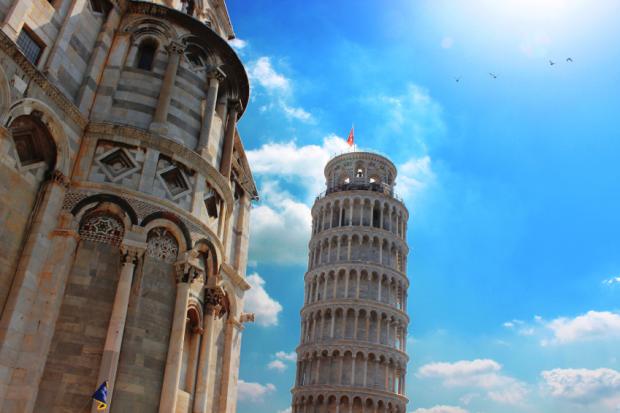Travellers come from all over to visit Pisa and the famous leaning tower, sometimes just to do this…

Whether you’re in it for the Instagram photo op or to see this architectural marvel firsthand for its historical significance, we’re willing to bet you don’t know all there is to know about this leaning wonder. Here are 4 Little Known Facts About The Leaning Tower Of Pisa!
The Tower Leans Because Of Poor Planning

While some architectural flubs are the product of bad luck, the Leaning Tower of Pisa’s signature tilt could have been avoided with better planning. A weak foundation and the soft ground of Pisa—composed of sand, clay, and deposits from surrounding Tuscan rivers were too unstable to support the building even in the early stages of its construction. The builders noticed this error early in the two-century construction project—after the addition of a second story to the tower, the ground began to give, prompting that infamous slant.
It Took Two Centuries To Build

Construction on the tower broke ground in August 1173. By 1178, workers had made it to the third story, which was already tilting slightly to the north. Military conflicts with other Italian states would soon halt progress, which would not resume until 1272. This time, construction only remained underway for 12 years before another war again stopped the work. A final wave of construction picked up again in the early 14th century, concluding with the installation of a bell chamber in 1372.
The Leaning Tower Of Pisa Isn’t The only Leaning Tower In Pisa
A number of other structures in Pisa suffer foundational issues thanks to the river city’s soft grounds. Among these are San Nicola, a 12th century church located about half a mile south of the Leaning Tower of Pisa, and San Michele degli Scalzi, an 11th century church about two miles east of the pair. While San Nicola, whose base is rooted beneath the earth, leans only mildly, San Michele degli Scalzi boasts a substantial 5-degree tilt.
Galileo May have Dropped A Cannon Ball From The Top

Among Renaissance physicist Galileo Galilei’s most famous achievements was the discovery that gravity’s effect on an object is the same regardless of its mass. This epiphany is said to have hit Galileo atop the Leaning Tower of Pisa, from where he allegedly dropped a cannonball and a musket ball in 1589. The scientist’s biography, penned by disciple Vincenzo Viviani, remains the sole official assertion that such an experiment took place.
Reference: mentalfloss.com
